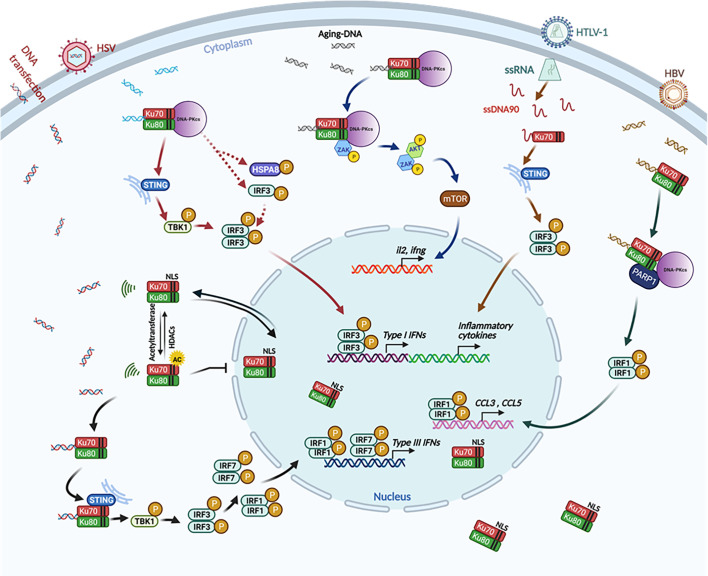Figure 3.
The involvement of Ku70 as a cytosolic DNA sensor to activate the innate immune response. Ku70 is identified as a cytosolic DNA sensor that induces type III IFNs through a STING-TBK1-IRF3, IRF1, and IRF7 signaling pathway. In this signaling pathway, cytoplasmic translocation of Ku70 is an initial and essential step (black arrows) (Zhang et al., 2011a; Sui et al., 2017; Sui et al., 2021); Ku70 and Ku80, together with DNA-PKcs (DNA-PK), are also involved in a STING-dependent (Ferguson et al., 2012) (solid arrow) and STING-independent (Burleigh et al., 2020) (dashed arrow) pathway to induce type I IFNs (red arrows). Ku70 is reported to sense HTLV-1 transcription intermediate product ssDNA90 and interacts with STING to induce IFNs and inflammatory cytokines, thereby modulating HTLV-1 replication (Wang et al., 2017) (brown arrows). The Ku70/80 heterodimer recognizes HBV-infection-derived DNA, then activates DNA-PKcs and PARP1 to induce CCL3 and CCL5 inflammatory cytokines (Li et al., 2016b) (green arrows). DNA-PK (the complex of DNA-PKcs, Ku70, and Ku80) senses aging-related cytoplasmic DNA in CD4+ T cells. This DNA sensing then induces T-cell proliferation and activation, as well as autoimmunity through the ZAK-AKT-mTOR pathway (Wang et al., 2021) (blue arrows). This illustration was created by using BioRender.

